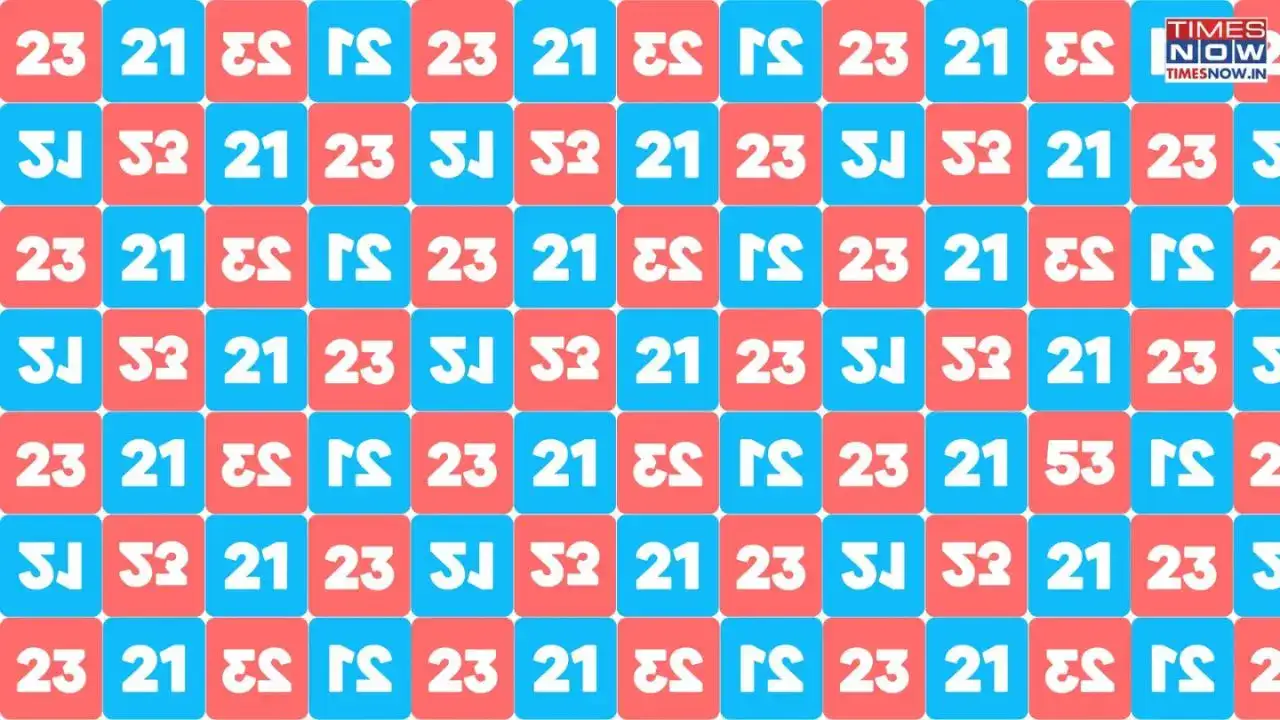
Our optical illusion today has been designed in a way to bring you a mind-bending puzzle that gives your mind a complete and fun workout
Our optical illusion today has been designed in a way to bring you a mind-bending puzzle that gives your mind a complete and fun workout — and it is all about how fast you can spot the hidden number, which is just in front of you. When you look at it first, it looks like just a repetitive pattern of the numbers ‘23’ and ‘21’ presented in the form of a mirror image in perfect harmony. However, there is a hidden number in this seemingly uniform grid that is an intruder — a number that doesn’t belong.
Can you spot it quickly?
This kind of visual puzzle is not a brain teaser but an eye test that challenges your attention to detail, focus, concentration, and pattern recognition skills. These illusions are designed to trick your brain into skipping over the anomalies by creating uniformity and symmetry that help make the odd ones hard to detect unless you slow down and observe with focus.
In the image that is pictured above, all the numbers are mirror images of each other. The `23’ and `21’ shapes get repeated many times, arranged in a tight and almost hypnotic grid. However, among them is hidden an impostor — the number 53, which breaks the visual pattern. Even though it is not easy to find it because your brain will quickly adapt to the repetition and begin to ignore fine differences.
These kinds of visual challenges are fun and entertaining and also offer cognitive benefits. Experts say puzzles like this stimulate your visual cortex of the brain and improve the ability to focus, thereby strengthening your brain health. Optical illusions also engage both hemispheres of your brain and are great exercises to boost problem-solving abilities. They train your brain to pause and analyse, instead of jumping to conclusions.
Where is the number that you need to find?
So, if you have not been able to find it and still want to challenge yourself, stop reading now and take another look at the image. However, if you are ready for the answer, the number 53 can be found in the third row from the bottom and the second column from the right.
This illusion is an example of how perception can be manipulated through repetitive shapes, subtle variations, and mirror images. Many people overlook the 53 on their first try because our brains tend to group similar items together and ignore fine details once a pattern is recognised. It’s the same psychological principle that causes us to overlook typos in texts when we're reading quickly — our brain fills in the gaps with what it expects to see.
If you spotted 53 quickly, congratulations — you have a brilliant and sharp eye! And if it takes you a while, do not worry; like any skill, visual perception can be trained and improved. So, keep engaging with such illusions regularly to boost your cognitive reflexes.
